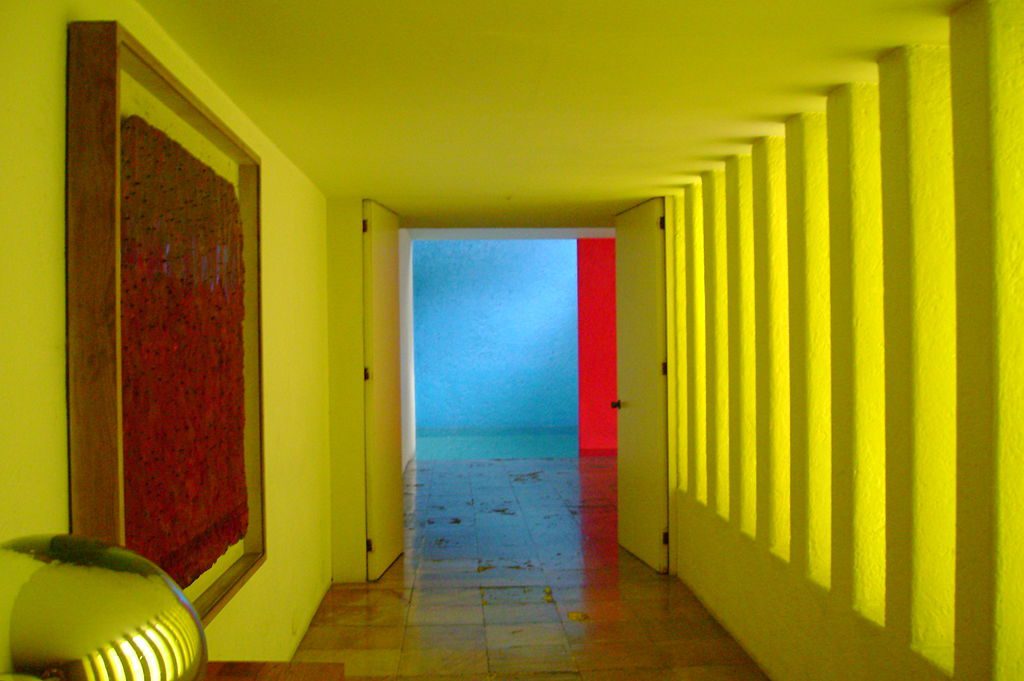Luis Barragán in Mexico City

After moving to Mexico City in 1935, Luis Barragán “set about designing a series of obscure functionalist residences that he would later disown.” Suleman Anaya travels to the capital in search of these forgotten buildings:
For the first five years after arriving in the booming capital, where he hoped to improve his prospects and would later stake his reputation, Barragán designed almost two dozen apartment buildings and houses in up-and-coming neighborhoods. Sometimes called Barragán’s functionalist years, these works have become unfairly forgotten footnotes in his storied career. Barragán distanced himself from his early Mexico City output. In a telling 1962 interview, he refers to his creations from this period as ‘edificitos’ (little buildings), ‘nothing great.’
Last fall, I traveled to Mexico City to look at this unspoken corner of Barragán. What could these buildings — to the extent that they survived — tell us about the genesis of Barragán’s mature phase that followed? Were they really as insignificant as their hidden condition suggests?
Not all of these buildings are masterpieces. A rental project Barragán designed for his brother lacks the attention to detail and emotional resonance of the rest of his work, its only point of interest a little roof terrace featuring an unglazed stripe window to frame distant mountains. A heavily modified apartment building on Calle Estocolmo, where the architect doubled as landlord, is similarly anodyne. But most of them contain elements — a meticulously modulated staircase, strategically placed skylights, in some cases just a simple, unnecessarily elegant metal mail slot — that speak to Barragán’s genius for imbuing space with wonder and enveloping even the most pragmatic projects in a thought-out sort of invisible parallel function: to provide the user with the most agreeable spatial experience possible.
In other news: Joe Moran reviews Nicholas Delbanco’s Why Writing Matters: “A more accurate title for this book would have been Why Teaching Writing Matters. Nicholas Delbanco, novelist, critic and Professor Emeritus at the University of Michigan, distils in its pages the wisdom he has gained from half a century of teaching creative writing in American colleges. On this evidence he must be an excellent teacher: probing but amiable, erudite but unforbidding, craft-driven but open to creative serendipities. His teaching has been led by a single big idea: ‘mimesis rules the form’. Just as a mockingbird borrows its song, and a jazz musician riffs on familiar motifs, so templates and formulae are the bedrock of literary creativity. No one strives for originality when practising arpeggios, so why should writing begin with the urge for self-expression? For creative writing students, primed to spill the contents of their young lives on the page, this is a useful lesson.”
Dante’s heaven: “In preparation for the 700 anniversary of the death of medieval poet Dante Alighieri, a Canadian artist is creating a sculptural tribute to his Divine Comedy that would be the first sculptural rendition of the entire poem. ‘In our culture Dante is becoming lost,’ said sculptor Timothy Schmalz in an interview with Religion News Service on Monday (July 20). Not only is Dante less and less required reading, Schmalz said, but his Divine Comedy is often misrepresented by putting the focus only on the first part — the descriptions of hell and its fiery punishments . . . According to Schmalz, limiting the poem’s scope to the Inferno means ‘not giving the proper representation of Dante and also the Christian ideas that are in the Divine Comedy. As a Catholic sculptor I have been very angry about this for many years,’ he said.”
The real-life missions that inspired Ian Fleming’s Bond.
In praise of patriotic art: “We have become so accustomed to art that either denigrates or ignores American history that it is a shock to be reminded of earlier generations of artists who venerated not just the country’s ideals but also its outward symbols.”
In search of ancient life on Mars: “The very first time NASA put a robot on Mars, it was looking for one thing: life. When scientists examined the mission’s early findings, they sent for champagne. They were convinced they’d discovered proof, quietly metabolizing, in the soil. But the data turned out to be muddled, and one experiment designed to detect organic molecules found none, not even simple ones that astronauts had found on the moon. Nearly half a century after that mission, its latest successor, a rover called Perseverance, left Earth this morning to scour Mars’s surface for signs of alien microbes.”
Photo: Wrocław
Receive Prufrock in your inbox every weekday morning. Subscribe here.
Comments